
BOEING
now owns...
--------
Boeing /
McDonnell-Douglas /
Rockwell International
(including North American)
|
• Boeing
which joined:

-
Boeing Commercial Airplane Company,
Seattle, WA area
(707, 727, 737, 747, 757, 767, 777...)
-
 Boeing Military Airplane Company,
Boeing Military Airplane Company,
Wichita, KS
(B-17, B-29, Stratoliner, B-47, B-52, KC-135)
-
Boeing-Vertol (helicopters),
Philadelphia, PA
(H-21 Workhorse, SeaKnight, CH-46 Chinook)
(also teamed with Bell Helicopter for tilt-rotor V-22 Osprey)
|
McDonnell-Douglas,
(MD-10, MD-11, MD-80, F-15, F-18, AV-8B, C-17, etc.)
which joined:
|
|
|

-
McDonnell Aircraft,
St. Louis, MO
(F-4 Phantom II, F3H Banshee, XF-85 Goblin, etc.)
|
|
|
|
|
|
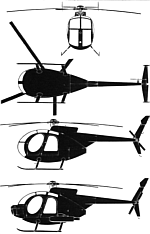
-
Hughes Aircraft,
Culver City, CA
(helicopters:
- Hughes 269A/300 [sold to Schweizer; see below])
- Hughes 369A/500 [spun off to MD Helicopters, Inc.; see below];
|
|
Rockwell International's aerospace div.
(Space Shuttle; Aero Commander line [sold off before Boeing acquisition].)
(formerly North American / Rockwell)
(A-5, OV-10, B-1)
which joined:
|
|
|
|
|
|

-
Rockwell Standard Corp.
(Aero Commander line; Bethany, OK)
|
|
• Hughes Electronics (satellites)
|
• Rocketdyne
(large rockets & rocket engines -- one of the nation's 3 chief makers of them)
|
|
|

Bombardier Aerospace
|
 Bombardier Aerospace,
Bombardier Aerospace,
(Montreal, Quebec, Canada)
Formed by the Canadian transportation collossus Bombardier, which started by building snowmobiles, and grew rapidly during the snowmobile craze of the 1970s, acquiring bus and railroad-train manufacturers, and several major aircraft firms in the 1980s/1990s (including Canada's two leading aircraft manufacturers):
-
Canadair (Canada) (acquired 1986)
(Challenger bizjet*; 'CRJ' - Canadair Regional Jet airliner*; CL-215/415 amphibious fire-bomber; CL-41 Tutor jet trainer (made famous by RCAF Snowbirds exhibition team), Canadair CL-44 large turboprop airliner derived from Bristol Britannia.)
[
*
The Canadair Challenger bizjets & CRJ jetliners were derived posthumously from designs of Bill Lear, the founder of Learjet Corp., which was also acquired, later, by Bombardier.]
Previously, license-built foreign aircraft, chiefly American and British: F-86**, F-5**, F-101**, F-104**, etc.)
[
**
Canadian license-built U.S. fighters commonly had the letter "C" added to the start of their designation; hence Canadair-built F-5s were designated "CF-5," and F-104 became CF-104, etc.; however, other designations or names were used, too. Many of these planes had uniquely-Canadian modifications.]
-
Shorts Brothers (Belfast, Northern Ireland, U.K.)
(Shorts Skyvan and Sherpa transports, and 330 turboprop airliner; WWII Sunderland flying boat, Stirling bomber, etc.)
 Shorts Brothers is generally regarded as the world's oldest aircraft manfacturing company, having started with the "manufacture" of copies of the Wright Flyer, under license, for European customers, circa 1908. Its aircraft played key roles in WWII, and shortly thereafter.
Shorts Brothers is generally regarded as the world's oldest aircraft manfacturing company, having started with the "manufacture" of copies of the Wright Flyer, under license, for European customers, circa 1908. Its aircraft played key roles in WWII, and shortly thereafter.
Shorts' development of the famously boxy "Skyvan" medium-turboprop transport led to an enormously successful line of light-to-medium size cargo and commuter-airliner aircraft, in wide use globally.
Shorts is now largely an aerospace subcontractor, a role which it provides extensively for other Bombardier Aerospace divisions.
-
Learjet (Wichita, KS and Tuscon, AZ) (acquired 1990)
(bizjets: Models 23/24/25, 35/36, 40/45, 55/60, etc.)
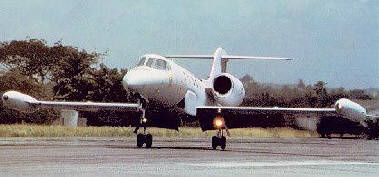
Arriving in the mid-1960s, the Learjet Model 23 -- with fighter-like performance, yet with operating costs far more cost-effective than any major business jet before it -- effectively created the world business-jet ("bizjet") market.
Its salesmen courted the rich and famous, making the Learjet a global status-symbol. Learjets, always among the sexiest-looking of all bizjets, remain one of the world's leading brands of business jets, even today -- most often specializing in blazing speed and relative economy, over comfort and short-field capability (but sacrificing relatively little of either to most other planes in their class).
(see
LEARJET
section, below, under
BIZJETS)
Acquisition of this company also led to the creation of the
Bombardier Flight Test Center (BFTC):
Because of Wichita's much fairer weather than Canada, and abundant aerospace R&D resources (Wichita is the world's largest-volume designer and manufacturer of aircraft, through facilities of Boeing, Airbus, Spirit Aerospace, Cessna, Hawker-Beechcraft, and Bombardier/Learjet), Learjet's Wichita home has also become home to the Bombardier Flight Test Center (BFTC), where all Bombardier experimental and development aircraft are flight-tested.
-
deHavilland of Canada (Canada)
(originally license-builder of planes of its British parent, deHavilland, Ltd., since WWI. Later became orginator of leading turboprop airliners and key military, utility and training aircraft):
- DHC-1 Chipmunk military trainer
- DHC-2 Beaver bush plane / single-engine light transport
- DHC-3 Otter bush plane / single-engine medium transport
- DHC-4 Caribou twin-prop medium-large transport.
- DHC-5 Buffalo 4-turboprop large transport.
- DHC-6 Twin Otter - twin-turboprop medium transport / commuter airliner / heavy-duty bush plane.
- DHC-7 'Dash-7' 4-eng. large turboprop regional airliner
- DHC-8 'Dash-8' 2-eng. large turboprop regional airliner
Bred for the challenging Canadian environment, many DHC planes have been widely considered the best in their class when introduced, and most are known for exceptionally rugged, utilitarian practicality and cost-effectiveness, and effective use of the shortest, crudest landing fields. The legendary Beaver, Otter & Twin Otter are widely regarded as the ultimate "bush planes," used heavily in the world's most remote places. The Dash-7 and Dash-8 are leaders and trend-setters in the modern turboprop airliner market.
|
BAE SYSTEMS /
BRITISH AEROSPACE
|
1999: BAE SYSTEMS
merger of British Aerospace with Marconi Electronics
--------
1977:
British Aerospace
merger of most of Britain's major aircraft manfacturers:
--------
1965, Hawker-Siddley
Hawker
A.V.Roe / Avro
Gloster
Blackburn & General
Folland
Airspeed
deHavilland
Armstrong-Whitworth
--------
1959, British Aircraft Corp. ("BAC")
Bristol
British Electric
Supermarine
Vickers
Hunting-Percival
--------
1936, Scottish Aviation
|
EADS/
Airbus/
Aerospatiale
|
 EADS / Airbus / Aerospatiale
EADS / Airbus / Aerospatiale
merger of most of France's aircraft manufacturers, plus other European mfr's.
2002:
EADS (European Aeronautic Defence and Space Company)
is co-owner
(with
BAE SYSTEMS
, above)
of:
ca. 1970,
Aerospatiale
, and
ca. 1970,
Airbus
-- created from merger of:
- Aerospatiale (France)
&
- Deutsche Aerospace (Germany);
- 1971: CASA (Spain) joined;
- 1982: alliance with British Aerospace (UK).
ca. 2000,
EADS
formed from:
-
Aerospatiale, plus...
-
Daimler Aerospace, of Germany
|
|
General Dynamics

|
 General Dynamics
/ Convair / Consolidated-Vultee
General Dynamics
/ Convair / Consolidated-Vultee
-
Consolidated Aircraft
merged with...
-
Vultee Aircraft
to produce...
-
Consolidated-Vultee Aircraft
later shortenend to...
-
CONVAIR (Convair)
later renamed...
-
General Dynamics
(Ft.Worth, TX)
later acquired by...
-
Lockheed-Martin
|
|
Lockheed-Martin

|
 Lockheed-Martin
Lockheed-Martin
merger of ...
Lockheed Aircraft
(Marietta, GA & Burbank, CA)
and
Martin-Marietta
(Marietta, GA)
and
General Dynamics
(Ft.Worth, TX)
|
LTV / Ling-Temco-Vought
|
LTV (Ling-Temco-Vought)
is
Chance Vought Aircraft
merged with
Texas Engineering & Mfg. Co. (TEMCO)
|
|
Northrop-Grumman

|
Northrop-Grumman
merger of ...
Northrop Aerospace (southern Calif.)
and
Grumman Aircraft (Bethpage, Long Island, NY)
|
|
~~*~~
|
~*~*~
|
|
|
Click here to return to the top
|
LIGHT AIRCRAFT
|
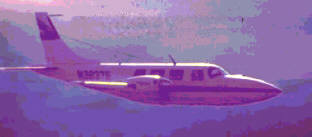
~~*~~
|
Aerostar
designer: Ted Smith
-
1965, Aero Commander (design only, as Aero Commander 700)
-
1965-69, Ted Smith Aircraft Co., Inc. (production began 1968)
-
Ted Smith Aerostar , Inc., div. of American Cement
-
Aerostar Aircraft Corp., div. of Butler Av.
-
Aerostar/Butler (Mooney)
-
Piper Aircraft: (see
Piper Aircraft
, below.
-
Aerostar Aircraft Corp. (current) (attempting to revive idea of bizjet version of pressurized Aerostar)
|
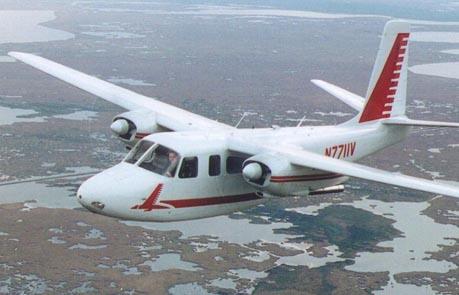 Aero Commander lines:
Aero Commander lines:
-----------------
Aero Commander
was originally formed in the 1950s as "Aero Design, Inc." to develop, produce and sell cabin-class light/medium piston twins, starting with the "Aero Commander 520" (right). Under the leadership and design expertise of Ted Smith, the Aero Commander twins became the pioneers of modern business aircraft.
In subsequent years, Aero Commander attempted to compete with the Big 3 (Cessna, Piper & Beech) by acquiring a diverse line of aircraft from struggling small manufacturers -- and even created a few designs of its own (mostly piston and turboprop twins).
In the late 1960s, Aero Commander was acquired by...
Rockwell-Standard -- which promptly also acquired...
North American Aviation, merging the two organizations into...
North American Rockwell. North American Rockwell became...
Rockwell International,
and eventually spun off its various aircraft lines into new hands, scattering the line across numerous companies. Details of acquisitions and divestitures are listed below, in similarly-colored sections.
|
-----------------
Aero Commander's twins
-----------------
|
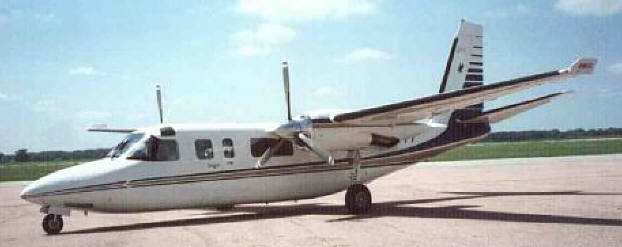
~~*~~
|
Twin-prop ("Twin Commander") line:
(500 / Shrike Commander / 520 / 560 / 680 / 685 / 690 / 800 / 900 / 1000 Grand Commander / Turbo Commander; designer: Ted Smith)
1944-58, Aero Design & Engineering Co.
Aero Commander div. of Rockwell Corp.
Aero Commander div. of North American - Rockwell
Rockwell Commander
Gulfstream Aerospace (as Gulfstream-Commander)
Twin Commander Aircraft Corp. (rebuilding Twin Commanders to "zero-time")
Renaissance Aircraft (rebuilding Twin Commanders to "zero-time")
|

~~*~~
|
Rockwell 700
(Acquired from Fuji Heavy Industries, Japan, where it was originally the Fuji 700, this was the first, and last, low-wing Commander prop twin. The program died quickly before any significant sales.)
Rockwell Commander
Gulfstream Aerospace (as Gulfstream-Commander)
|
-----------------
Aero Commander's business jet
-----------------
|
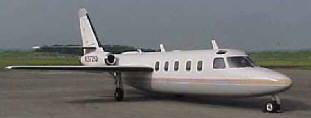
~~*~~
|
-----------------
Jet Commander
(see
"Jet Commander /..."
section, below, under
BIZJETS).
|
-----------------
Aero Commander's Early single-engine Commander lines:
-----------------
|
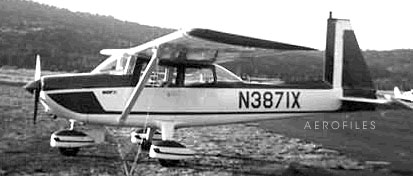
~~*~~
|
(the 2-4-seat, high-wing line: designer C. Vollmer)
Volaire Aircraft
Aero Commander div. of Rockwell (as the Lark & Darter)
Aero Commander div. of North American - Rockwell
|
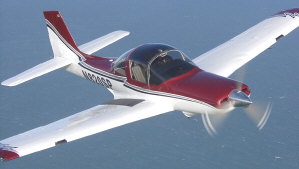
~~*~~
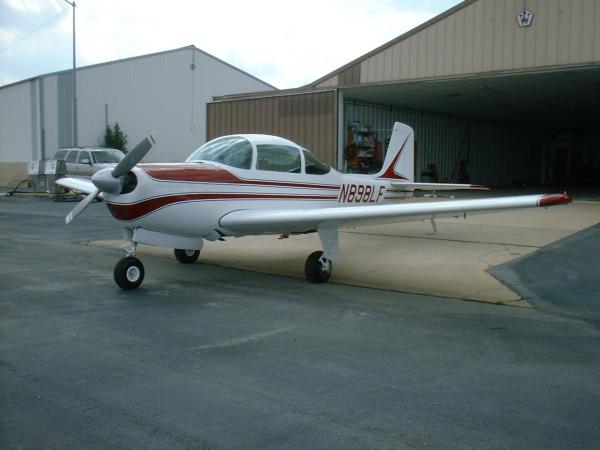
|
-----------------
(designer: Al Meyers)
Meyers (145 & 200)
Meyers Aircraft Corp..
-
2-seat, retractable-tailwheeled Meyers 145:
(never produced by Aero Commander)
- MICCO (the Meyers 145, modified as the SP-20 and SP-30)
- Meyers Aircraft Corp. (attempts to revive 200/400).
-
4-seat, retractable-tricycle Meyers 200:
- Aero Commander div. of Rockwell (200)
- Aero Commander div. of North American - Rockwell
(the Meyers 200, as the AeroCommander 200D)
- Interceptor Corp. (200, with turboprop as "Interceptor 400")
|
-----------------
Aero Commander's Later single-engine Commander lines:
-----------------
|

~~*~~
|
-----------------
Commander 112/114
This was Aero Commander's first productive attempt at designing its own single-engine airplane (rather than buying and building someone else's design). Though not as successful as its competition, owing to its stout build and roomy cabin that resulted in high drag and weight, and poor performance, it garnered a niche as an exceptionally comfortable and sturdy aircraft in its class, with a good safety record.
Aero Commander div. of North American - Rockwell
Rockwell Commander
Commander Aircraft (Oklahoma City, Okla.)
|
-----------------
Aero Commander's Cropdusters
-----------------
|
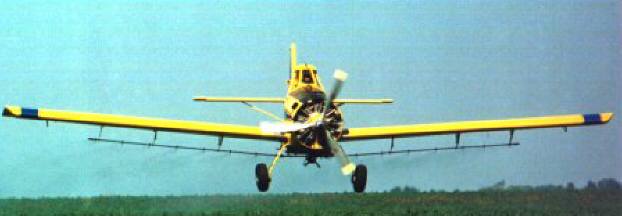
~~*~~
|
-----------------
Call/Sparrow/Quail
Call Aircraft (Afton, WY)
Aero Commander
CAMA (Mexico)
|
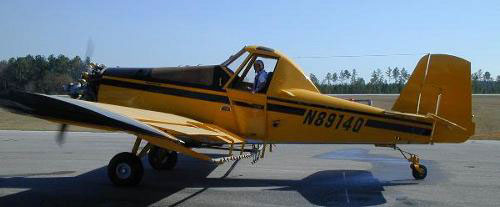
~~*~~
|
-----------------
Snow/Thrush
(Snow / Snow Commander / AgCommander / Thrush / TurboThrush) (generally the leading "big" plane in the cropduster market)
Snow Aircraft
Aero Commander div. of North American - Rockwell
Rockwell Commander
Ayres Aircraft (Florida)
|
|
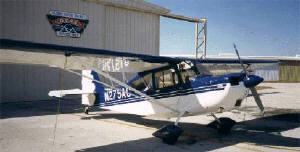
~~*~~
|
Aeronca Champion (including "Champ," "Citabria" etc.)
ca.1927, Roche-Dohse ('Flying Flivver' prototype), Dayton, OH
1928, Aeronautical Corporation of America, Cincinnatti, OH
1937, Aeronca, Middletown OH
1951, Champion Aircraft, Osceola, WI (including 7EC Champ & 7ECA Citabria)
ca.1970, Alexandria Aircraft (as Bellanca-Champion line, including Citabria, Scout & Decathalon)
ca.1999, American Champion Aircraft (current) (various versions of Citabria)
|
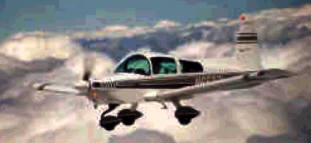
~~*~~
|
American/Yankee/Tiger line
Bede Aircraft (as BD-1 kitplane)
American Aircraft (as AA-1A Yankee, and 4-seat AA-5A Traveler, AA-5B Tiger)
Grumman-American (as AA-1B Trainer & Tr-1; AA-1C Lynx, AA-5C Cheetah, AA-5B Tiger)
Gulfstream Aerospace (as Gulfstream-American AA-1C Lynx, AA-5C Cheetah, AA-5B Tiger, and AA-7 Cougar twin)
AGAC - American General Aircraft Corp. (as AG-5B Tiger)
Tiger Aircraft (as AG-5B Tiger)
SOCATA (of France) (AA-7 Cougar twin relabeled as TB-50 Tangara)
|
|
~~*~~
|
Beech / Raytheon / Hawker-Beechcraft (& Travel Air)
origins:
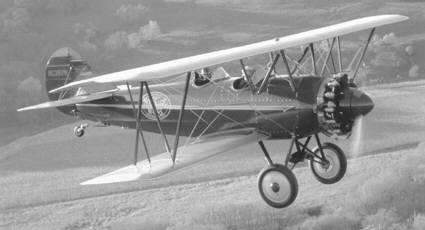
-
1924,
Travel Air Manufacturing Co.
(originally with Clyde Cessna, Lloyd Stearman & Walter Beech), later...
-
1926,
Travel Air Manufacturing Co.
(still, but with just Clyde Cessna & Walter Beech -- Lloyd Stearman left to start his own company), later...
-
1927,
Travel Air Manufacturing Co.
(still, but with just Walter Beech -- Clyde Cessna left to start his own company), later...
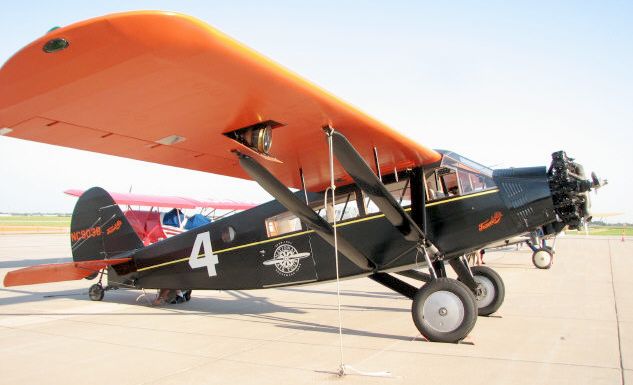
-
August 1929.,
Travel Air Div.
of
Curtiss Wright Corp., Wichita
(Walter Beech promoted to V.P. of Sales for Curtiss-Wright's dealerships ("Curtiss-Wright Flying Service" FBOs), as well as continuing as Pres. of Travel Air Div.; offices in St.Louis & New York).
NOTE: At about this time, Travel Air was producing 25% of U.S. "commercial" (civilian) aircraft. The explosion of orders was due in part to a customer-financing schemed worked out with the Curtiss-Wright Corp. The explosive growth in orders, in turn, led to an urgent need for more capital to rapidly expand production to meet demand. Accordingly, Travel Air sold the company to ("merged it with") Curtiss-Wright Corp. This was a time of soaring sales and sweeping mergers throughout the aviation industry, as the nation raced recklessly towards a financial collapse.
-
Nov.1930-Sept.1932 (still
Travel Air Div.
of
Curtiss Wright Corp.) With the economy collapsing, and orders disappearing, the factory gradually relocated to Curtiss-Wright plant in St.Louis, and Wichita factory closed. (Model 17 Staggerwing developed, but not put into production)
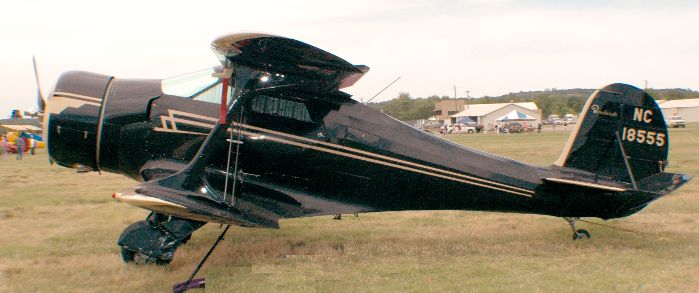 independent as:
independent as:
-
1932,
Beech Aircraft Corp.,
Wichita (in old Travel Air factory) First product is Model 17 Staggerwing. Company would continue as a successful, independent company for the next several decades.
NOTE: Beech Aircraft Co. -- producing legendary "Beechcraft" airplanes -- becomes one of the "Big 3" of general aviation, and is initially the industry leader.
During the Great Depression, demand for the excellent Staggerwing, one of the fastest U.S. planes of its time, remains surprisingly high.
From this success, and with help from a massive business loan from the Federal government, Beech acquires the expensive tooling and facilities to begin the first major production of all-metal light aircraft
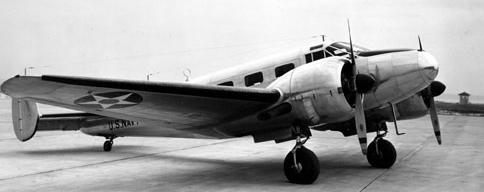 -- starting with the Beech 18 ("Twin Beech") executive twin. During World War II, it would see heavy use as a light transport and as a key trainer for bomber
crews. After the war, hundreds would help build early commuter airlines
, air cargo, airmail and bush-flying operations, remaining in production for 33 years (one of the world's longest-selling aircraft).
-- starting with the Beech 18 ("Twin Beech") executive twin. During World War II, it would see heavy use as a light transport and as a key trainer for bomber
crews. After the war, hundreds would help build early commuter airlines
, air cargo, airmail and bush-flying operations, remaining in production for 33 years (one of the world's longest-selling aircraft).
 Flush with federally-funded contracts and resources after WWII, Beech was, for years, the strongest survivor of the postwar shakeout of the general aviation industry. While most lightplane makers tried to dust off old 100-mph "tube-and-rag" models, Beech developed a radical new plane -- the retractable-geared, all-metal, 4-seat, 170-mph, V-tailed Beech Bonanza -- which faced no real competition for several years, becoming the most-desired plane in general aviation, and a top seller.
Since 1947, with over 9
,000 of all types built, the Beech Bonanza has become the world's longest-running continuously-manufactured aircraft.
Flush with federally-funded contracts and resources after WWII, Beech was, for years, the strongest survivor of the postwar shakeout of the general aviation industry. While most lightplane makers tried to dust off old 100-mph "tube-and-rag" models, Beech developed a radical new plane -- the retractable-geared, all-metal, 4-seat, 170-mph, V-tailed Beech Bonanza -- which faced no real competition for several years, becoming the most-desired plane in general aviation, and a top seller.
Since 1947, with over 9
,000 of all types built, the Beech Bonanza has become the world's longest-running continuously-manufactured aircraft.
 Beech evolved many models from the Bonanza, a step at a time -- giant Twin Bonanza, to Queen Air (the first modern executive cabin-class airplane), King Air (a turboprop, pressurized Queen Air, the most successful turbine business aircraft ever), turboprop airliners derived from the cabin-twins, 'Travel Air' and Baron light twins based on the Bonanza, and a variety of smaller aircraft imitating Piper's smaller metal planes.
Beech evolved many models from the Bonanza, a step at a time -- giant Twin Bonanza, to Queen Air (the first modern executive cabin-class airplane), King Air (a turboprop, pressurized Queen Air, the most successful turbine business aircraft ever), turboprop airliners derived from the cabin-twins, 'Travel Air' and Baron light twins based on the Bonanza, and a variety of smaller aircraft imitating Piper's smaller metal planes.
-
1980,
Beech Aircraft div.
of
Raytheon Corp.;
Olive Ann Beech continues title as Chairman Emeritus, but real control is in the hands of Raytheon.
Beech did not innovate its own jet aircraft, but tried a series of imported designs, starting with the "first business jet," the 4-seat French Morane-Saulnier (SOCATA) "Paris Jet" in the late 1950s
-- a flop.
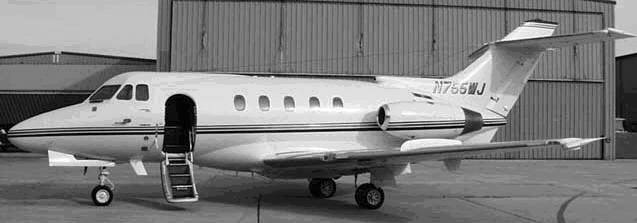 In the 1960s, Beech imported British deHavilland / Hawker-Siddley DH-125 / HS-125 bizjets (at right), relabeling them as "Beech-Hawker BH-125" jets.
In the 1960s, Beech imported British deHavilland / Hawker-Siddley DH-125 / HS-125 bizjets (at right), relabeling them as "Beech-Hawker BH-125" jets.
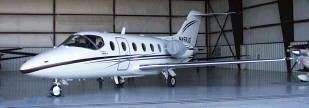 After that fizzled, Beech turned to Japan, purchasing the very practical and versatile
Mitsubishi
Diamond bizjet (relabeled "Beechjet 400", now "Hawker 400"), moving the entire factory to Wichita.
After that fizzled, Beech turned to Japan, purchasing the very practical and versatile
Mitsubishi
Diamond bizjet (relabeled "Beechjet 400", now "Hawker 400"), moving the entire factory to Wichita.
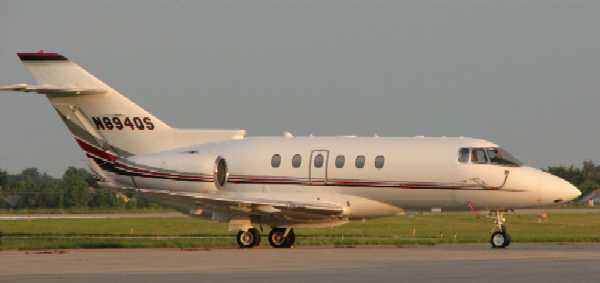 This success was followed by customer demand for something bigger, and Beech turned again to the HS-125 (now "Hawker 700") -- buying all rights and the factory, moving all to Wichita. Recognizing the international fame and respect of the "Hawker" name, it was preserved on all subsequent models.
This success was followed by customer demand for something bigger, and Beech turned again to the HS-125 (now "Hawker 700") -- buying all rights and the factory, moving all to Wichita. Recognizing the international fame and respect of the "Hawker" name, it was preserved on all subsequent models.
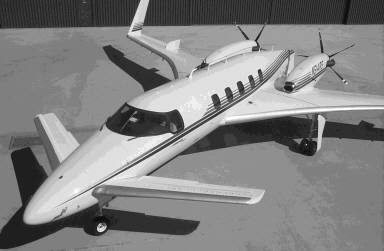 With competitors' turboprop twins outperforming the King Air, Beech attempted to innovate past them with the nation's first all-composite certified airplane (also the first "glass cockpit" U.S. plane), the Beech Starship. A failure, with only about 50 built (compared to thousands of King Airs), it nevertheless
was influential in composite aircraft design, giving Beech a technical edge over competitors.
With competitors' turboprop twins outperforming the King Air, Beech attempted to innovate past them with the nation's first all-composite certified airplane (also the first "glass cockpit" U.S. plane), the Beech Starship. A failure, with only about 50 built (compared to thousands of King Airs), it nevertheless
was influential in composite aircraft design, giving Beech a technical edge over competitors.
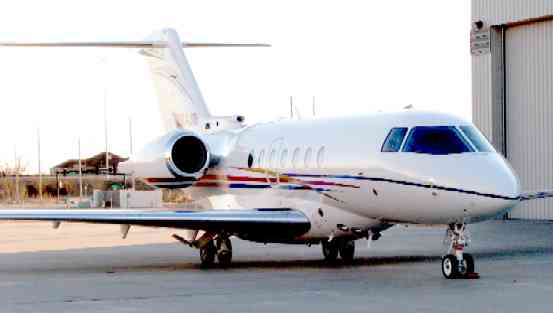 That advance resulted in the Beech Premier and Hawker Horizon (Hawker 4000) composite-fuselage bizjets, developed very slowly during Raytheon's ownership, finally showing promise under Onex (see below).
That advance resulted in the Beech Premier and Hawker Horizon (Hawker 4000) composite-fuselage bizjets, developed very slowly during Raytheon's ownership, finally showing promise under Onex (see below).
-
1993,
Raytheon Aircraft div.
of
Raytheon Corp.
(Beech name removed from the company upon the death of Olive Ann Beech). (Beech merged with
Hawker Jets div.
of
British Aerospace
) All planes relabeled as "Raytheon" planes.
-
ca.2003: Raytheon Aircraft div. of Raytheon Corp. creates:
- Beechcraft div.
and
- Hawker div.
(Revival of the "Beechcraft" and "Hawker" brand names under new Raytheon Aircraft div. Pres. Jim Schuster, who begins rebuilding of company ravaged by previous incompetent, heavy-handed, Raytheon management).
New branding scheme:
- Planes previously named "Beech," before rebranding as "Raytheon," are again branded as "Beech"; and...
- planes originally named "Hawker" also regain their old brand names.
-
ca.Dec.2006
Hawker-Beechcraft Corp.,
div. of
Onex Corp.
(retaining Jim Schuster as div. Pres., Onex buys Raytheon Aircraft div. from Raytheon Corp.. New name reflects sales dominance of Hawker business jets in the company's product line.)
New branding scheme:
-
Planes certified for
SINGLE-pilot operation
(all propeller aircraft, and Premier business jets) are branded "Beech",
- Planes limited to
TWO-pilot operation
are labeled "Hawker" (this includes all previous Hawker business jets, and the former "Beechjet 400A", which is renamed "Hawker 400")
[NOTE: Onex also, a few years previously, acquired
Boeing
's Wichita factory, renaming it "Spririt Aerospace", which continues the factory's original role as an airliner fuselage and sub-assembly factory for Boeing. Look for cooperative ventures between the two Wichita-based Onex divisions -- Spirit and Hawker-Beechcraft -- in coming years]
|

~~*~~
|
Bellanca
---------
(steel-tube/fabric/wood-wing aircraft, by Giuseppe M. Bellanca)
1912, Bellanca Aeroplane Co.
1913-1922, Giueseppe Bellanca (on his own)
1922-23, Roos-Bellanca Airplane Co.
1923-26, Wright-Bellanca
1926-27, Columbia Aircraft Co. (Chas. Levine as president, Bellanca as Chief Engineer)
1927-56, Bellanca Aircraft Corp.
---------
regular Bellanca tube/fabric/wood-wing line, all in Alexandria, MN:
Downer Aircraft
Interair
Bellanca (not connected to Bellanca family) (includes Bellanca-Champion line, see "Aeronca/Champion" list)
Alexandria Aircraft
Alexandria Aircraft, LLC (current)
---------
Avia Bellanca (offshoot, by son August Bellanca, to produce composite 'Skyrocket'),
|
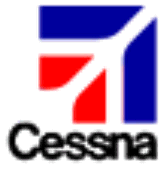
~~*~~
|
Cessna / Textron, (Wichita, KS)
-
1911,
Cessna Aeroplane Exhibition Co.,
(Clyde Cessna built his own plane from scratch, copying the Bleriot XI, and taught himself to fly it as an early barnstormer; starting in Enid, OK, and relocating to home ground near Rago, KS; later attempted manufacutre of planes in Wichita, KS, but not successful. World War I government restrictions forced the shutdown of his company.)
-
1925,
Travel Air Mfg. Co.,
(Clyde Cessna -- wealthy from farming and farm machinery development after quitting the barnstorming business -- provided money, expertise and leadership to the fledgling company formed by Walter Beech, Lloyd Stearman, and Bill Snook -- defectors from the nearby Swallow Airplane Co., America's first successful "commercial airplane company."
After initial Travel Air leadership by Walt Innes, Jr., Clyde Cessna served briefly as Travel Air's president, and leading investor, and developed prototype of historic Travel Air 5000 monoplane, before leaving to start his own company.)
-
1927 (Apr.19)
Cessna Aircraft Co.
-
1927 (Sept.7)
Cessna-Roos Aircraft Co.
(reorganized to accept financial help from aviation investor Victor Roos)
-
1927 (Dec.22)
Cessna Aircraft Co.
-
Sep.1985 -- Mar.1986,
Cessna Aircraft Co.
becomes a subsidiary of
General Dynamics
(The company had already sold a small percentage of its stock to General Dynamics, in Nov.1983, and provided GD with a seat on Cessna's board of directors.)
-
1992,
Cessna Aircraft Co.,
div. of
Textron Corp.,
-
2008
Cessna Aircraft Co.,
div. of
Textron Corp.,
-- acquires Columbia Aircraft, the manufactured, fixed-gear version of Lancair kitplanes (Bend, OR; relocating to Independence, KS)
|
|
~~*~~
|
~*~*~
|
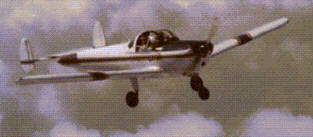
~~*~~
|
Ercoupe
1940-41,
ERCO - Engineering Research Corp.
(hence: "ERCOupe"), Riverdale, MD (112 built)
1945-52,
Sanders Av.
(as Ercoupe 415C-415H),
Riverdale, MD (5,028 built)
1956-60,
Forney Aircraft
(Fornaire F-1 Aircoupe)
Ft.Collins, CO (157 built)
1960-62,
Air Products
(F-1A Aircoupe)
Carlsbad, NM (25 built)
1964-67,
Alon Aircraft
(Alon A-2 Aircoupe)
McPherson, KS (245 built)
1967-68,
Mooney
(Alon) Aircraft (A2-A Aircoupe)
McPherson, KS (21 built)
1968,
Mooney
(Alon) Aircraft (A2-A Cadet)
McPherson, KS (38 built)
1969-70,
Mooney Aircraft
(as Mooney M-10 Cadet)
Kerrville, TX (59 built)
|

~~*~~
|
Fairchild, Swearingen & SAAB
The Swearingen Merlin/Metro line evolved into a series of turboprop commuter airliners:
Swearingen Aircraft, TX (Merlin/Metro line)
Fairchild Aircraft Corp. acquired Metro line
SAAB licensed turboprop airliner as SAAB-Fairchild SF-30
|

~~*~~
|
Monocoupe & Luscombe (incl. 8 & Sedan)
Mono Aircraft (Phantom, Monocoupe)
Luscombe Aircraft (Model 8/Silvaire and Model 11/Sedan)
-----------
DLAHF (Don Luscombe Aviation History Foundation: type certificate holders for Model 8/Silvaire)
Rennaissance Aircraft (attempted revival of Model 8/Silvaire)
Luscombe Aircraft (Model 11/Sedan), Altus, OK
|

~~*~~
|
Mooney
(designers: Al Mooney, Ralph Harmon, etc.)
ca.1936,
Mooney Aircraft
(Wichita, KS, under sponsorship of Bridgeport Machine Co.)
ca.1947,
Mooney Aircraft
(restarted, following collapse of Culver Aircraft), Wichita, KS
ca.1951-68,
Mooney Aircraft
(relocated) Kerrville, TX (Al Mooney soon surrendered ownership.) Included late-1960s relabeling of
Ercoupe
and Mitsubishi MU-2 turboprop twin
as "Mooney" planes.
ca.1970,
Butler-Aerostar Aircraft
(Mooney, absorbing
Ted Smith Aerostar
, as div. of Butler Aviation)
ca.1972,
Mooney Aircraft div.
of
Republic Steel
(Mooney, having spun off
Aerostar
twin line to
Piper
)
ca.1980,
Mooney Aircraft Corp.
(current)
-----------
NOTE: Mooney relabeled various planes, including:
ca. 1968-69,
Alon
A2-A Aircoupe (later modified into M-10 Cadet)
ca. 1968-71,
Mitsubishi
MU-2 series turboprop twins (popularly nicknamed "rice-rocket")
ca. 1980,
SOCATA
TBM-700 pressurized turboprop single
|

~~*~~
|
Navion
-----------------
single-engine Navion:
---------
-
ca.1945, North American Aviation (as "NAvion")
-
ca.1947, Ryan (as Navion)
-
ca.1966, Navion (as Rangemaster), TX
-
1966, American Navion Society (as Rangemaster Model H), Seguin, TX
-
1972, Navion (Lou Bishop)
-
ca.1972, Navion (Ced Kotowicz), Wharton, TX (7-8 planes)
-
ca.1970, American Navion Society (parts only), Banning, CA
-
1990, American Navion Society (parts only), Lodi, CA
-
1999, American Navion Society (parts only), Grand Junction, CO
-
2001, American Navion Society (parts only), Grand Junction, CO (HQ in Vancouver, WA)
-----------------
Twin Navion conversions:
---------
Riley Twin Navion:
1952, Dauby Eqpt. Co., Los Angeles, CA and Acme Aircraft Co., Lomiat, CA (prototype, sold to Jack Riley, 1953)
1952-54, Riley Aircraft Corp., Ft.Lauderdale, FL
1953-57, TEMCO (Texas Engrg. & Mfg. Co.), Dallas/Grand Prairie, TX (near Ft.Worth) (mfg. under license from Riley)
Cam-Air 480:
1952 CAM-AIR div. of Cameron Iron Works, Galveston, TX
|

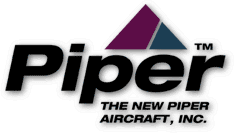
~~*~~
|
 Piper / New Piper:
Piper / New Piper:
- ca.1927, Taylor Brothers Mfg. Co., Rochester NY (Taylor Chummy, designer: C.Gordon Taylor)
- ca.1928, Taylor Brothers Mfg. Co., Bradford, PA (Taylor Cub E-2, designer: C.Gordon Taylor)
acquired by Wm. Piper, Sr., retained Taylor Bros. name for some years, with C.G. Taylor as president
(C.G. Taylor left to form Taylorcraft, which would go in and out of business intermittently to the present)
- ca. 1935, Piper Aircraft Corp., Lock Haven, PA; later added Vero Beach, FL facility. (At this point, Piper -- selling its wildly popular , economical, little J-3 Cub -- is one of the VERY few aircraft companies to be growing and prospering in the midst of the Great Depression. The company would retain its Lock Haven home until the 1970s, growing to become a world leader in light planes.)
- late-1960's, Piper Aircraft Corp. div. of Bangor-Punta (seized from Piper family in hostile takeover), Vero Beach, FL
[a series of bankruptcies and reorganizations followed, as the company went in and out of business], Vero Beach, FL
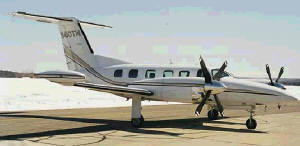
- ca. 1990, New Piper Aircraft Corp. (current), Vero Beach, FL
|

~~*~~
|
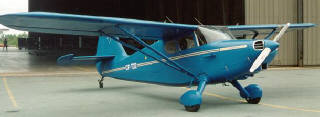 Stinson (108 / Voyager / Station Wagon)
Stinson (108 / Voyager / Station Wagon)
ca. 1926, Stinson Aircraft, Detroit, MI
ca. 1946, Stinson Div., Consolidated-Vultee Aircraft
ca. 1947, Stinson Div., Piper Aircraft
(Stinson line soon discontinued, but Twin Stinson heavily modified into successful Piper Apache)
|

~~*~~
|
Swift (Globe/Temco, etc)
Globe Swift (copied largely from wooden Culver Cadet, extensively re-engineered)
TEMCO (Texas Engineering & Mfg. Co.) (first built Swifts under license, then acquired the line)
Piper/LoPresti Swift Fury (attempt to revive design, heavily modified by Roy LoPresti)
|

~~*~~
|
 Taylor Bros. / Taylorcraft & Piper
Taylor Bros. / Taylorcraft & Piper
ca.1927, Taylor Brothers Mfg. Co., Rochester NY (Taylor "Chummy," designer: C.Gordon Taylor)
ca.1928, Taylor Brothers Mfg. Co., Bradford, PA (Taylor "Cub E-2," designer: C.Gordon Taylor)
acquired by Wm. Piper, Sr., retained Taylor Bros. name for some years, with C.G. Taylor as president
-----------------
(C.G. Taylor left to form Taylorcraft, which would go in and out of business intermittently to the present)
-----------------
Piper Aircraft: (see
Piper Aircraft
, above.
-
ca. 1935, Piper Aircraft Corp., Lock Haven, PA; later added Vero Beach, FL facility
-
late-1960's, Piper Aircraft Corp. div. of Bangor-Punta (seized from Piper family in hostile takeover), Vero Beach, FL
-
[a series of bankruptcies and reorganizations followed, as the company went in and out of business], Vero Beach, FL
-
ca. 1990, New Piper Aircraft Corp. (current), Vero Beach, FL
|

~~*~~
|
Taylor / Colonial / Lake amphibians
(designer: Molt Taylor, no relation to C.Gordon Taylor)
Taylor (Taylor Coot 2-seat homebuilt model; also Taylor Aerocar flying automobile), Seattle, WA area
Colonial Aircraft (Colonial Skimmer)
Lake Aircraft (LA-4, Buccaneer, etc.)
Taylor (Taylor Coot 2-seat homebuilt model)
|
|
~~*~~
|
~*~*~
|
FOREIGN LIGHT AIRCRAFT (also see other categories)
|
 Return to
Return to Return to
Return to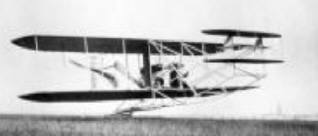 Return to
Return to